Hooray! You finished writing your book! Take a moment to revel in the satisfaction, but as you slide down from cloud nine, you’ll notice a slate full of new tasks waiting — editing, revisions, proofreading, formatting, marketing, and more. It's time to figure out how to sell books, and on that journey, perhaps the most critical undertaking to absolutely nail is your book cover design.
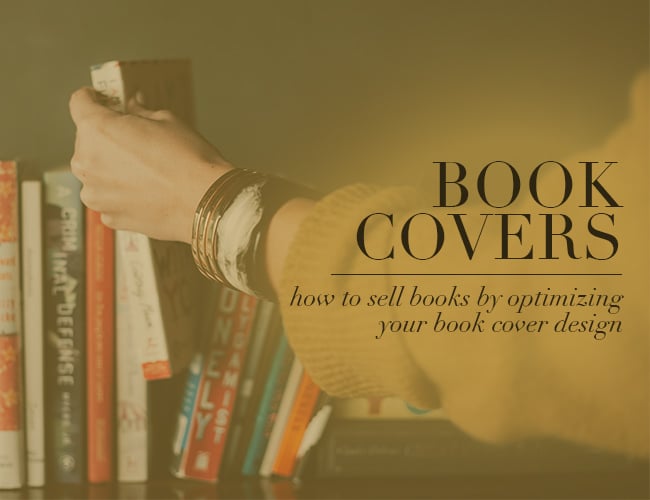
It’s not just the first thing a potential reader looks at — if your cover doesn’t fire on all cylinders, capturing your target reader’s attention, it’ll be the only thing he looks at before moving on to the next book.
Selling Your Book Comes Down to YOU
Whether you plan to do it yourself or hire a designer, there’s a lot you need to know about how to put together a book cover that sells. If you’re an indie author, you are responsible for every aspect of the finished product. Don’t rely solely on the cover designer to get it right — it's up to you to figure out how to sell books, and more specifically, how to sell your book.
This can be difficult, because you have to get out of your writer mindset and into your marketer mindset, and that requires some mental shifting and a willingness to learn new skills. My aim is to provide good guidelines, some examples to follow, and a list of resources to help you on your way.
Our Best Book Cover Designers
Before we get started, if you're not already a professional designer, you're probably going to want to hire someone to help. But where do you look for a book cover designer?
At The Write Practice, we have a vetted list of book cover designers that we recommend. You can find them here, along with a link to their portfolio and contact:
Key: $= $100-349, $$ = $350-$750, $$$ = $750+
Book Cover Designers
5 Front Cover Design Tips
The front cover is your book's first impression, so it makes sense to start here when you're learning how to sell books. Here are five ways to make sure you get your front cover right:
1. Study your genre
Look at the current bestselling books in your genre. Is the cover busy with artwork or clean and spare? What kind of color palettes are at work? What kind of font is used? Where are the elements — title, author name, tagline — positioned?
It’s not about being pretty — it’s about zeroing in on your target like a heat-seeking missile. Not until it’s a lock will your reader turn to the back cover, your blurb, or sneak a peek at your opening lines.
2. Look professional
It must look professional. In today’s publishing industry, the reader is the new gatekeeper, and readers are becoming increasingly savvy at sizing up a book by its cover.
If you’ve worked hard to polish the inside of your book, making it the best it can be, apply the same work ethic to the outside.
3. Capture emotion
Readers choose based on emotion. Don’t appeal to her rational thought process. Instead, evoke the emotion you want her to feel.
This is true even for non-fiction, though not to the same degree. The head may come into it when you get to the back cover and blurb, but the front cover is all about the heart.
This is why it’s so important to look at bestselling covers in your genre. These are the books readers are buying, and emotion is the key.
4. Include a teaser
Use a teaser, tagline, or subtitle. Too much text on the cover will dilute the power of what’s there. However, if you have a punchy, concise hint about the book’s most compelling plot line, including it on the front cover will give your book a more professional look.
And using a simple, genre-related subtitle will help search engines find your book more easily on platforms such as Amazon.
5. Stick with what works
Don’t scorn success. A lot of indie authors think they need to break new ground with their book cover, but the better plan is to stick with what works.
Again, it goes back to attracting the kind of reader who will love your book. That reader operates under a complex set of cues and decision-making mechanisms, most of which are on a subconscious level. Embrace the power in that and ride on the shoulders of the trailblazers.
4 Back Cover Design Tips
If your front cover is your book's first impression, your back cover is where you'll close the sale. If you want to figure out how to sell books, make sure every word and design choice you make on your back cover convinces your reader she won't want to put your book down. Follow these four tips:
1. Write a blurb that sells
Use a well-crafted blurb. I’ll cover this in more detail below.
2. Less is more
White space is your friend. Don’t overburden the back of your book.
Put the blurb in the center, with a tagline over or under it, and maybe a review quote if it’s from a well-known source. Don’t use what your Aunt Jane said after she read your book, unless she’s a reputable authority on the subject. If it doesn’t crowd the space, you can include a short bio. Less is more.
3. Design for clarity
Make sure you, or your designer, uses the appropriate font size and color.
Until recently, Mark Leslie ran Kobo Writing Life, the indie branch at Kobo. I first met him shortly after my novel Nocturne In Ashes was published, and I had a copy with me. I asked him what he thought of the cover.
He said the front was great, but he grimaced when he turned it over and looked at the back. He pointed out that the font was too small and the color allowed the text to be swallowed by the background graphic.
I hadn’t noticed before, but he was right. Now I try to be more discerning.
4. Great cover designers borrow
Feel free to borrow from someone else’s design. It’s not copyrighted. Don’t reinvent the wheel. Study best-selling covers in your genre and use them as models.
8 Back Cover Blurb Tips
Here’s a cold, hard truth for you, and it may hurt going down, but once you’ve swallowed and digested it, you’ll be better equipped to write your sales copy. Ready?
Readers don’t care how much time, sweat, blood, tears, or hard-earned cash you put into your book. They only care about what they stand to get out of it. And rightly so. For them, it’s all about the experience your book will provide, and that’s what you need to focus on in your back cover blurb.
This is sales copy, folks. This is where you sell your book. Here are eight principles to keep in mind:
1. Your book is a product
Look at your book as a product. Writing sales copy is still writing, but it requires a different skill set and mindset. This back cover blurb will serve as your sales description, and you’ll find yourself referring to it again and again, every time you introduce your book into a new sales channel or formulate an ad campaign.
2. Hint, don't spoil
Resist outlining the plot. If you tell the reader what happens, they won’t need to buy the book to find out. Don’t reveal plot beyond the first chapter. Instead, give readers an appetite for your story. Sell the sizzle, not the steak.
3. Use buzz words
Use the buzz words and phrases that resonate with readers of your genre. For instance, as a writer of thrillers, I might use: edge of your seat, nail-biting suspense, riveting, gripping, shocking, jaw-dropping, heart-stopping, action-packed, etc.
Study blurbs from the best-selling books in your genre to see what your target readers identify with.
4. Hype your story
Don’t be afraid to hype it a little. As writers, we often shrink from tooting our own horns and as a result, we tend to undersell ourselves. My mentor, Dean Wesley Smith, tells me that if I think I’m going way over the top, I’m nearly halfway there. Don’t be ludicrous, though.
5. Use present tense
Sales copy is written in present tense. Keep that in mind and stay consistently in the present.
6. Include a tag
Consider using a tag at the beginning or end of the blurb. Use a larger font for this, and lean toward sentence fragments rather than complete sentences. (Not sure what a tag is? More on this below.)
7. Eliminate passive voice
Ruthlessly exterminate passive voice. There are instances in your writing where passive voice may be suitable. This is not one of them.
Go through your copy with a fine tooth comb and root out was, is, has, are, will be, have been, etc. And no contractions. Contractions won’t hide passive voice.
8. The reader is paramount
Always consider the reader! There is a reader on the other side of your words — don’t put something in your blurb that makes the reader not want to buy your book.
This includes things like graphic violence, erotic sex, and details that distance your reader from your main character or that go contrary to genre expectations.
Basic Anatomy of a Back Cover Blurb
Mastering your back cover blurb is an important step in learning how to sell books. Not sure where to start when it comes to writing back cover copy? Not to worry: back cover blurbs follow a specific structure, so you know exactly what you need to include.
Here are the five essential parts of a brilliant back cover blurb:
1. Tagline
A tagline is a pithy or hard-hitting one-liner that encapsulates the reading experience. I’ve provided examples from two of my books.
Death of a Muse: The cat gets nine lives. David gets one. And time is running out for both of them.
Adalet: Scarred surface. Soul deep.
2. First paragraph
Something engaging about the character or the story world in summary. No plot beyond first page events. No passive voice. Nail down genre, if possible, and keep it succinct.
Death of a Muse: David Peeler, a sculptor poised for a brilliant career and an equally anticipated marriage, loses it all at the point of a knife.
Adalet: The jagged mark runs from collarbone to breastbone, marring her beauty, destroying her peace. A reminder of her deepest failing.
3. Second paragraph
If you introduced your character in the first paragraph, bring in the setting now, and vice versa. Hit something about the plot of the first chapter only, the hook to get your reader in the door and wanting more. Keep it short, two or three sentences at most. No passive voice.
Death of a Muse: In a last-ditch effort to find a gleam of his former sparkle, David attends an artist retreat where he enjoys the companionship of Muse, the resident tabby.
Adalet: Adalet sees only one way to overcome the ruins of her life. Entangled in a deadly game of lies, pitted against a ruthless opponent, she stakes every last shred of herself on winning.
4. Third paragraph
This is the plot kicker line — da da da dum! Summarize the stakes, infuse intensity. This is usually a one-liner, a tag, a punch. More will weaken the potency.
Death of a Muse: Until someone kills the cat.
Adalet: But he holds all the trumps.
5. Fourth paragraph
This is your enticing summary and call to action. This is where you tell your reader why they should buy your book. It’s fine to use three or four lines here.
Death of a Muse: Proving who did it may be the key to a new life for David, if he can solve her murder before he shares her fate. If you love crime stories with a puzzle to solve, grab Death of a Muse today.
Adalet: In a struggle between revenge and redemption, Adalet balances on a thin crust of sanity. If you love a story full of twists and suspense, take a spin with Adalet.
Some resources worth your time
- Ready to hire a cover designer? We recommend Ebook Launch for beautiful and marketable book covers.
- Go to Creative Indie Covers for a good free guide on indie book covers.
- I recommend having a variety of renderings for your covers. DIY Book Covers has a fantastic tool for quick and easy 3D covers.
- For a down-to-earth look at what it takes to produce a book that sells, try Steven Pressfield’s Nobody Wants to Read Your Sh*t. Steven worked in New York advertising for a number of years before going full time with his writing, and no one is better at telling it like it is.
- Dean Wesley Smith put together How to Write Fiction Sales Copy, with thirty-two covers and examples to study.
- And no one did more to help me figure out all the pieces of the process and put them together than the super awesome Joanna Penn. Check out How to Market a Book.
Do you have any more cover design tips? Share your thoughts in the comments section.
PRACTICE
Using the basic outline for a back cover blurb, practice writing the sales copy for the cover of your book. Use a book you’ve written, or one you are in the process of writing.
If you don’t currently have a book project, write the blurb for a book you read recently, or even a movie you watched. The point is to practice looking at the story from a marketer’s perspective and writing a description that sells.
Take fifteen minutes to write your blurb. When you're done, share your blurb in the comments below. Be sure to leave feedback for your fellow writers! Based on their blurbs alone, would you read the book?
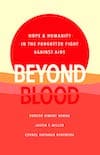
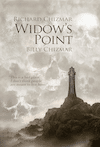
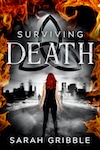
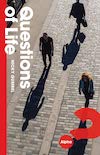
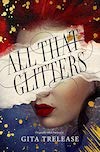

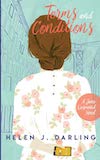
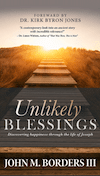
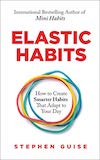

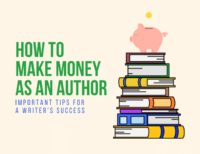

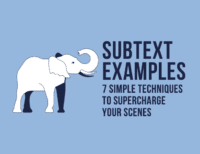
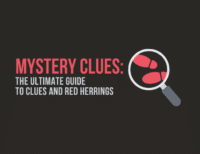



0 Comments
Trackbacks/Pingbacks